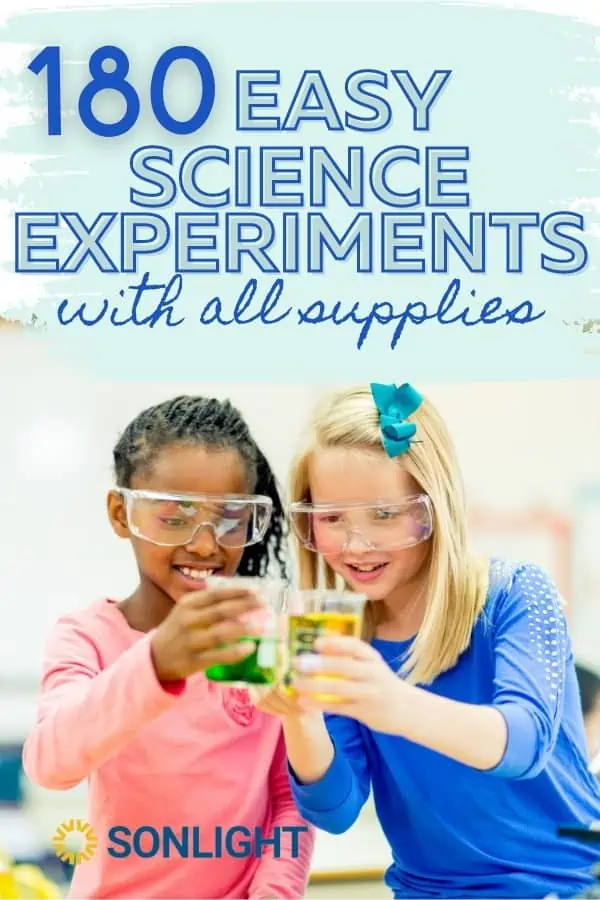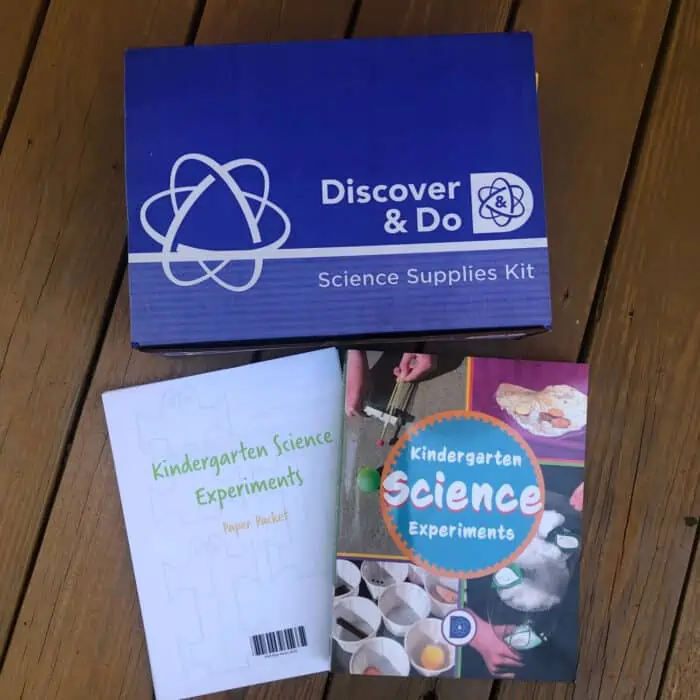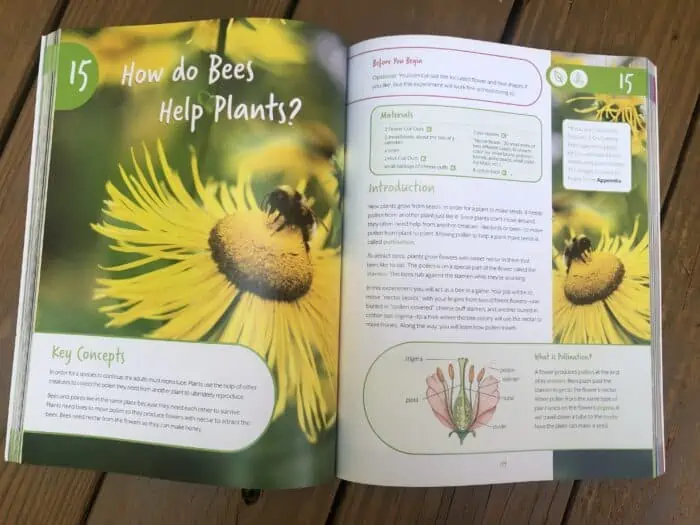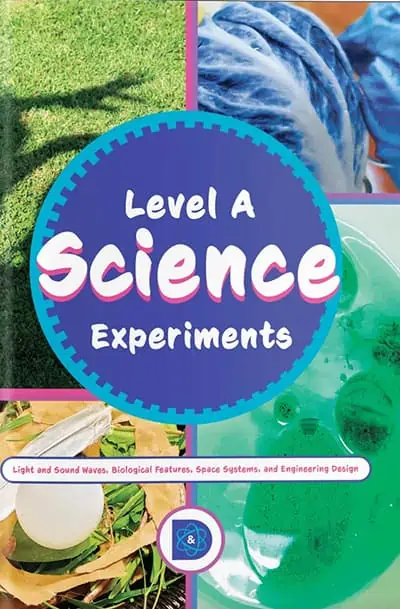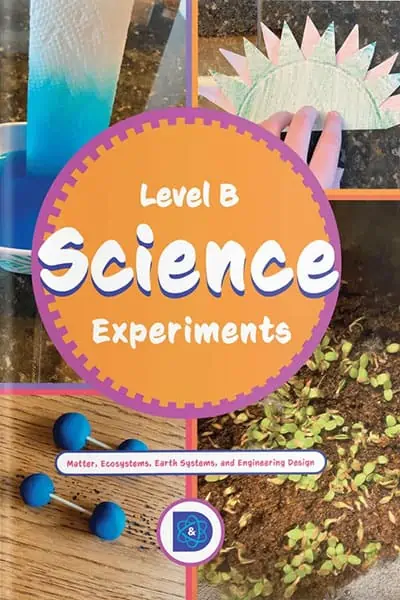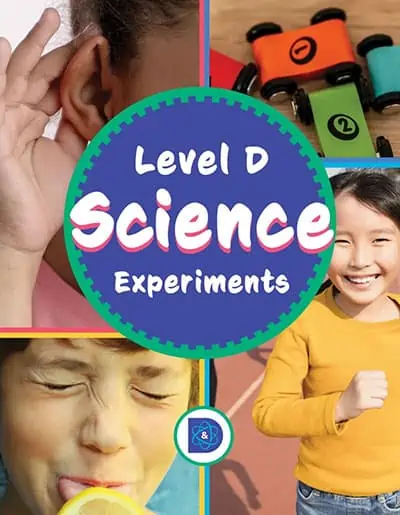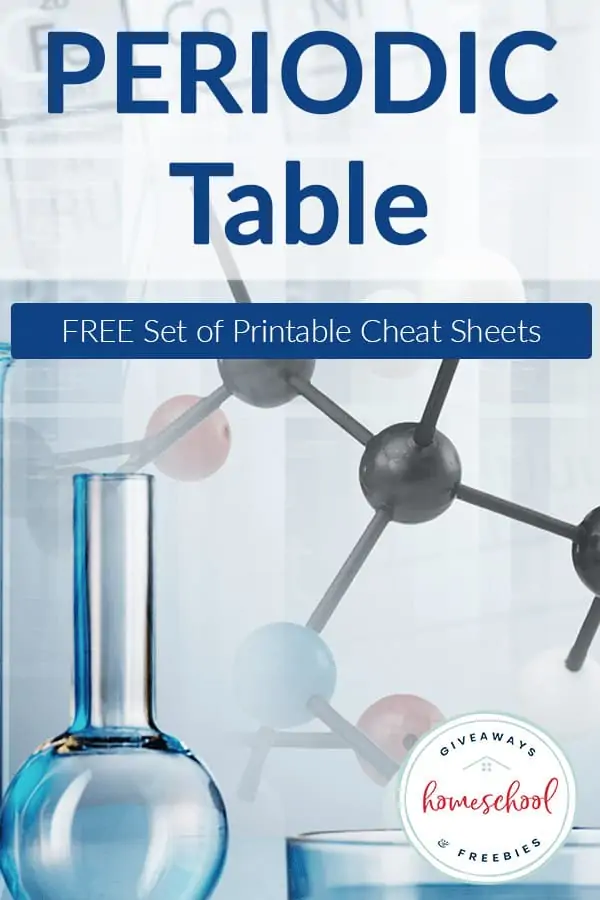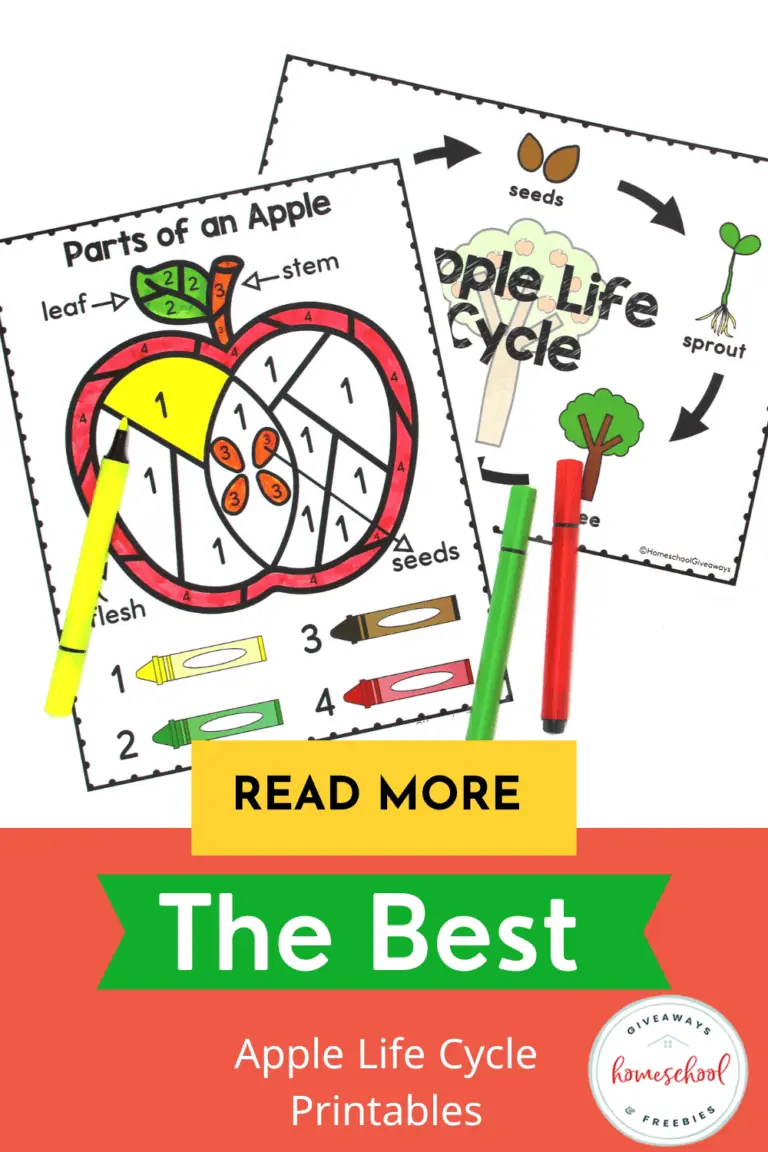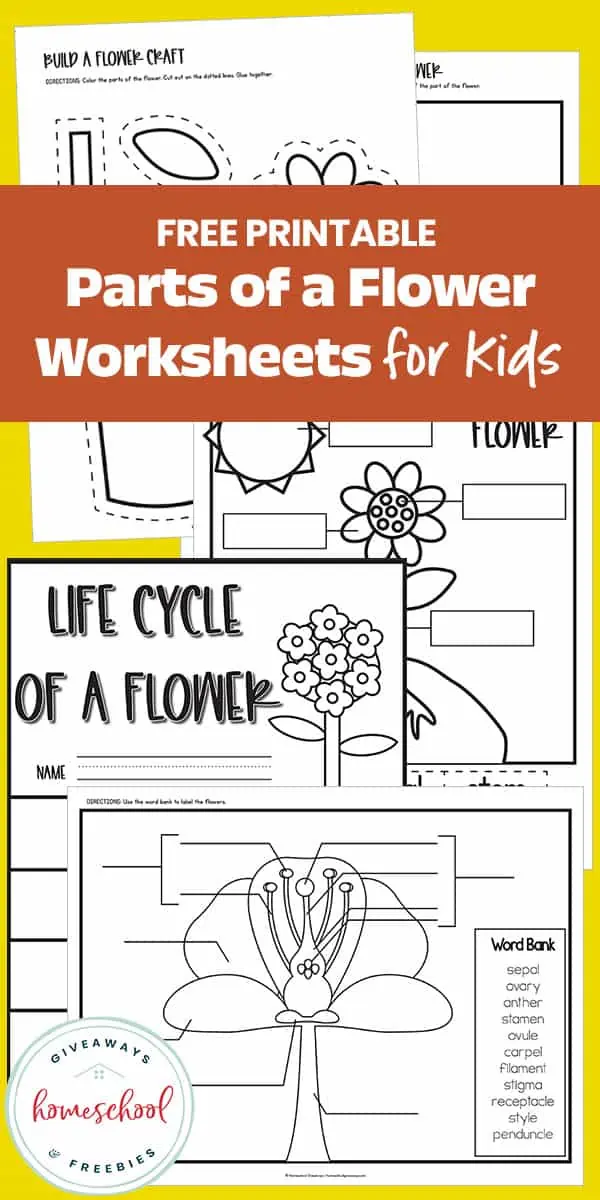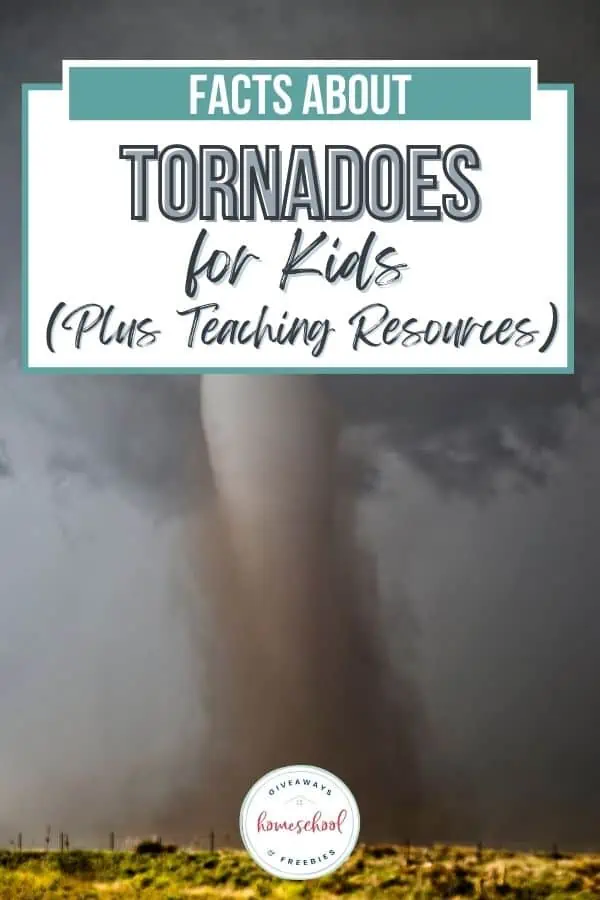180 Easy Science Experiments With All Supplies
Published:
June 23, 2022

Contributor:
Sonlight
Disclosure: This post may contain affiliate links, meaning if you decide to make a purchase via my links, I may earn a commission at no additional cost to you. See my disclosure for more info.
Science activities are a great way to engage your kids in learning! But it’s even better when the science experiments are easy and you have all the supplies on hand. Check out these easy science experiments for kids of all ages.
Easy Science Experiments for Kids
Your little scientists will love learning about the physical world with classic science experiments. They can follow the scientific method and learn how to make a hypothesis. The easiest way to learn science is to do some kid-friendly science experiments. Some moms want to skip science experiments, but there are so many benefits of incorporating them into your homeschool day. Read on for helpful ideas for the mom who hates science experiments.
What are some simple science experiments?
Some of the most simple science experiments to try with your kids are the ones that show a simple chemical reaction. Experiments like the classic vinegar and baking soda volcano are great if you can talk through what’s happening before and after you make a reaction (and a mess)!
Another simple science experiment is to create slime, which involves a chemical reaction called cross-linking that changes the position of the molecules to create the substance we know as slime.
Whenever your kids can experience a scientific idea in a hands-on way, they’ll grow their love of science.
What is the easiest science project to do?
An easy experiment to do at home with any age is to create a homemade lava lamp.
All you need are a few household items for your kids to learn simple science concepts. A homemade lava lamp will show them how different liquids have differing densities.
How to Create a Homemade Lava Lamp
Just fill an empty water bottle most of the way with vegetable oil. Then, add colored water the rest of the way and watch how the water sinks to the bottom because it’s denser than the oil. Turn your bottle over a few times to watch the fun!
What is the best experiment for kids?
The best experiment for kids might be the Rainbow Milk Fun Science Experiment. Your kids will see how dish soap reacts with fat molecules in the milk.
How to Do the Rainbow Milk Science Experiment
Just fill a shallow dish with whole milk. Then, add a little bit of food coloring on top of the milk. Lastly, dip a Q-tip into some dishwashing liquid and gently touch the surface of the milk in the middle of some food coloring. Finally, sit back and watch the “explosions” that happen in your dish. This is a fun experiment that even preschoolers can do.
What are good ideas for an experiment?
You can easily learn about the water cycle with a simple experiment. Just put a small amount of water into the bottom of a plastic sandwich bag and add a drop of food coloring. Then, zip the bag shut and tape it to a sunny window. Check on it every hour. Your kids will be able to see water droplets form on the inside of the bag as the sun causes the water to evaporate, then condense, and finally precipitate.
Watch Plants Grow
Your kids will love to watch plants grow from seed to sprout in a Ziploc bag taped to a sunny window. First, make sure the soaked seed is nestled into a damp paper towel for extra moisture as it grows. Put a different seed into a dark place and compare the differences after a few days or a week. Your kids will have a great visual to show the power of the sun to help plants grow.
Color-Changing Flowers
One last easy experiment idea is to fill a couple glasses with different colored water. Then, put one white daisy or white carnation into each glass. After a few hours or a day, see if the flower’s petals have now changed to match the color of the water. Talk about how this happens!
Sonlight’s Discover & Do: Experiments, Videos and Supplies Kits
The best part of Sonlight’s science experience is that your children not only read captivating books that explain the concepts, but your kids can then learn by doing with these easy to follow experiments.
The Instructor’s Guide takes the guesswork out of homeschooling, as all the lesson plans are done for you. And so your kids are not only reading but experiencing in a hands-on way each week’s science content.
Easy Science Experiments
Each Discover & Do Science Experiments book comes with all the information you need to help walk your child through 36 engaging science experiments. That’s one for each week of the homeschool year! Plus, these experiments directly relate to the great books your child is reading in science. The softcover book includes colorful illustrations to help you and your child complete each project successfully. A paper packet of necessary consumables comes with your book.
How it Works
The lesson begins with a question. By starting this way, your child’s natural curiosity is piqued and then he can work through answering that question using the scientific method.
For example, the very first lesson in the Kindergarten Science Experiments book starts with this question: Why do ants build tunnels? Key concepts are listed in the book, along with a list of the materials you’ll need for the experiment. Then, in an easy to follow narrative style, the book walks you through the content, interspersing instructions along the way. In this particular activity, your child will use kinetic sand to try to build their own ant hill as they discover the answer to the main question posed at the beginning.
Discussion Questions for Critical Thinking
The book gives questions to ask your child along the way of experimentation. For example, as your child tries to make tunnels in the kinetic sand using various digging tools, you can ask, “What happened to the sand as you were digging?” By answering that question, your child is getting closer to answering the main question from the start of the lesson. Suggested answers are included in the book to help you teach your child.
After your child walks through the Investigate section, they will come to the section called Draw Conclusions, where there are several key follow-up questions. Finally, the Takeaway summary at the end pulls it all together and even gives extra activity ideas to take the learning further. This particular lesson didn’t require anything from the Paper Packet.
Videos
In addition to getting their hands dirty with a science experiment of their own, your children can watch a video that corresponds to each activity. Each video begins with the same question from the book.
In an entertaining and engaging format, the short video walks through the same hands-on activity that was used in the book. That way, your visual learners can see how to set up the science activity and check their conclusions with the video.
Or, if you don’t have time to complete an activity yourselves each week, your child could watch the video independently instead and still be able to answer the science question of the week. The videos are all relatively short, from about 7 to 15 minutes each.
Supplies Kits
When you order the Discover & Do: Science Supplies Kits, you’ll have everything you need to complete all 36 experiments. This will keep you from having to round up all sorts of materials from different places and let you focus instead on completing the experiments successfully. The Kindergarten kit included items like a rod type water meter, kinetic sand, clay, yeast, sugar cubes, and plastic canvas.
Discover & Do: Kindergarten Science Experiments
The Kindergarten Science Experiments book is amazingly easy to follow, while still covering deep scientific concepts. Nothing is watered down in this book!
Your child will be investigating some serious questions here, but on a level that they can understand. Many kindergarten-level science resources are much too simplistic.
Sonlight shows that even five year-olds can learn to think like a scientist and engage in investigation at an appropriate level. Plus, the book is in full color and very engaging. There are plenty of illustrations to show you exactly how to complete each experiment.
Kindergarten Science Experiments
Here is a sampling of the favorite science experiments you will find in the Kindergarten kit.
Why does the Rainforest Grow in Layers?
This fun question will be easier to understand when your child builds a model of a rainforest and explore the way it works. In lesson 10, your child will need these materials: plastic canvas, rainforest layers template, cotton balls, bamboo skewer, plastic bottle, black construction, solar leaf pattern, sun-sensitive paper, and paper clips.
Your child can follow the instruction in the book or watch the related video to be able to build this rainforest model. After making a solar tube, you will expose your paper to the sunlight for only 2 minutes, then drop the sun-sensitive paper into water to develop for about one minute.
At that point, your child will be able to see exactly what happens in the different layers of the rainforest, and which layers do and don’t get much sunlight.
Why are Honeycombs Hexagons?
You’ll find this experiment in lesson 13. Your child will use clay from the Science Supplies Kit and Honeycomb Tessellation Shapes from the Paper Packet to discover how bees store their honey in a group of hexagons that is more efficient than a group of circles.
Your child will form circles from balls of clay, then squish them together to see how a hexagon shape forms and takes up less space than the round circles.
What do Beans Need to Sprout?
This question is found in lesson 17. You’ll find almost everything you need in the Science Supplies Kit and Paper Packet. This activity uses: black construction paper, plastic cups, kinetic sand, 12 beans, water, small box, and Observation Log.
Your child will set up several tests and observe the bean sprouts to see what it takes to sprout a bean. One bean will receive no water, the second bean will receive no sunlight, and the final bean will get both water and sunlight.
How do Clouds form?
In lesson 20, your child will learn about weather patterns and how meteorologists make predictions. Your child needs a few different materials for this experiment: Weather chart and sticker sheet, glass jar with a lid, boiling water, ice, hair spray, paper plate, wooden spoon, and black backdrop.
Each day for four weeks, your child will observe the weather and record their observations. Then, your child will pour two inches of boiling water in the jar, put ice cubes on the overturned lid, and finally spray hairspray into the jar and replace the lid. You’ll be able to watch a cloud form inside the jar. This model shows how the water evaporates and rises. As the air rises, it cools and condenses. The water in the air grabs onto dust in the air just like it grabbed onto the hairspray in the jar. This is when clouds form.
How do You Measure Temperature?
In lesson 21, your child will explore how thermometers work. Here’s what you need: thermometer, test chart, cooked oatmeal at 3 different temperatures, ice, water, hot water, freezer, stove, bed, car, plastic bottle, and two bowls. The science experiments book will walk you through all the steps with easy to follow instructions, helpful illustrations, and questions to ask along the way. Before you know it, your kindergartener will be able to answer the original question: How do you measure temperature?
180 Easy Science Experiments for Kids
If you are looking for some simple science experiments you can do at home with your kids, we’ve found the best ones! Can you imagine easy experiments your children can do at home, mostly independently? Plus, you’ll have ALL the experiment supplies already since they come in a complete science kit for you.
Pair the supplies, easy instructions, and the step-by-step video tutorials and you’ll have a fun weekly science experiment at your fingertips for every week of the school year!
Discover & Do Experiments Level K
Recommended Ages: 5-6
|
|
Discover & Do Experiments Level A
Recommended Ages: 6-8
Your kids in grades 1-3 will enjoy these 36 experiments that connect directly with what they’re reading about in their Sonlight Science A package. Kids will learn the value of starting with a key question and following the instructions until they are able to draw conclusions. These experiments provide a great way to explore hands-on learning of abstract concepts.
The Discover & Do: Science Supplies Kit A will give you nearly everything you need to complete the steam activities. Finally, expand the learning even more with the Discover & Do: Level A Science Experiment Videos.
|
|
Discover & Do Experiments Level B
Recommended Ages: 7-9
The 36 Level B science experiments directly relate to the reading in the Sonlight Science B package. Your kids in grades 2 through 4 will love exploring further and following their natural curiosity with these cool science experiments.
They’ll be diving into physical properties of matter along with changes in matter. With simple ingredients and common household products plus the Discover & Do: Science Supplies Kit B, you’ll have everything you need to explore science concepts in a fun way.
|
|
Discover & Do Experiments Level C
Recommended Ages: 8-10
Grab Level C to help your third through fifth grader connect with the reading from the Sonlight Science C package.
Your kids will learn to think like a scientist as they complete experiments using common household ingredients. Included is a list of science experiments gives complete instructions along with illustrations and tips so that your kids are successful in completing these activities.
|
|
Discover & Do Experiments Level D
Recommended Ages: 9-12
Level D will help your kids in grades 4 through 7 be able to form an hypothesis, complete an experiment, and draw conclusions like a scientist.
If you want all the materials at your fingertips, make sure you grab the Discover & Do: Science Supplies Kit D. All 36 experiments connect directly with the readings in the Sonlight Science D package.
|
|
Final Thoughts about Easy Science Experiments for Kids
Would your kids love to try one of Sonlight’s science experiments? You can download a Free Sonlight Science Experiment which includes complete PDF instructions for answering the question: How is Chocolate Made?
Or go ahead and try a full kindergarten science lesson on fermentation. You’ll get the video demonstration, full step-by-step instructions, and the teaching notes. Your kids will learn about fermentation and be able to learn why leaf cutter ants need leaves. It’s the perfect hands-on science activity for young kids.

